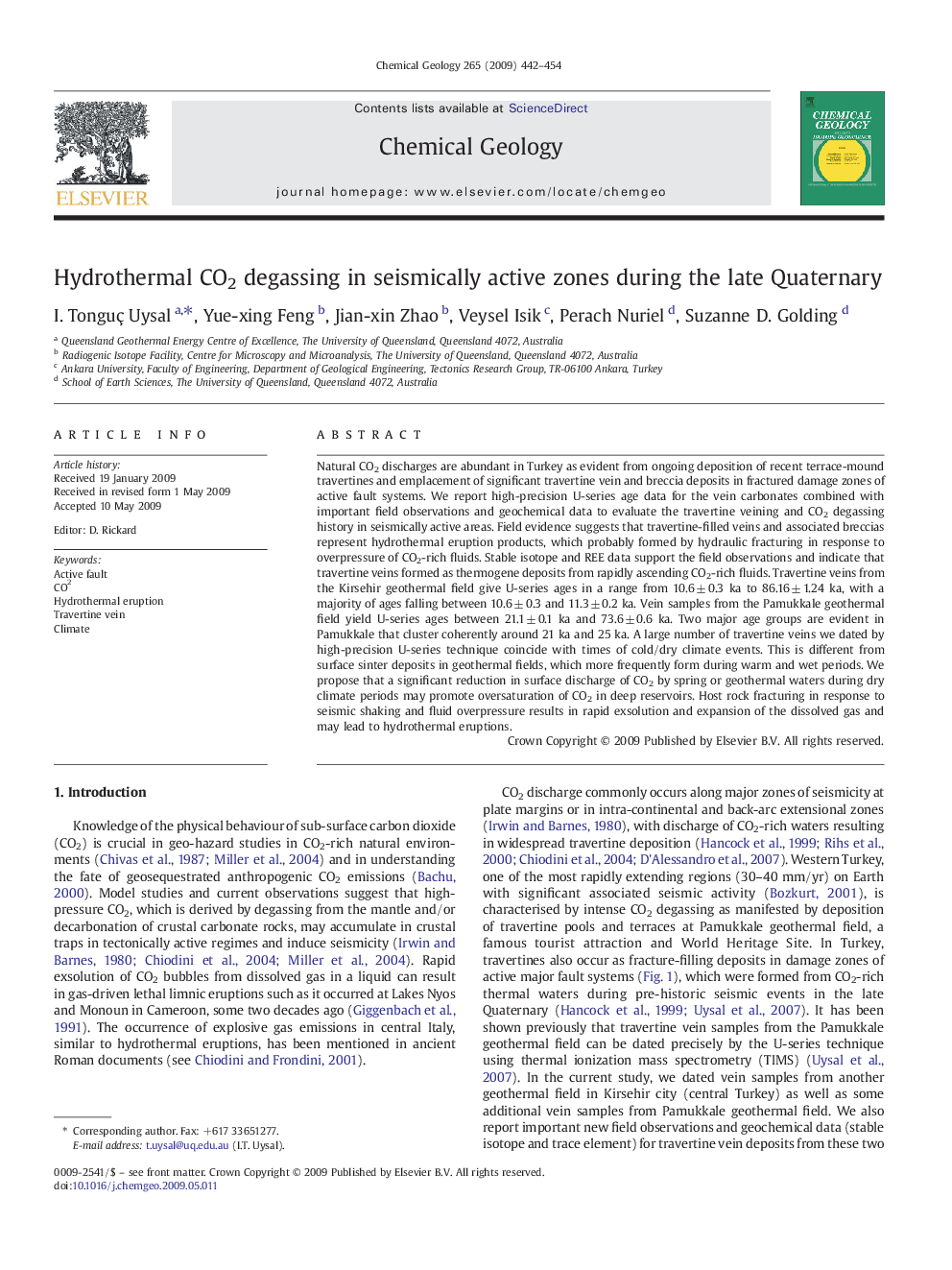| Article ID | Journal | Published Year | Pages | File Type |
|---|---|---|---|---|
| 4700228 | Chemical Geology | 2009 | 13 Pages |
Natural CO2 discharges are abundant in Turkey as evident from ongoing deposition of recent terrace-mound travertines and emplacement of significant travertine vein and breccia deposits in fractured damage zones of active fault systems. We report high-precision U-series age data for the vein carbonates combined with important field observations and geochemical data to evaluate the travertine veining and CO2 degassing history in seismically active areas. Field evidence suggests that travertine-filled veins and associated breccias represent hydrothermal eruption products, which probably formed by hydraulic fracturing in response to overpressure of CO2-rich fluids. Stable isotope and REE data support the field observations and indicate that travertine veins formed as thermogene deposits from rapidly ascending CO2-rich fluids. Travertine veins from the Kirsehir geothermal field give U-series ages in a range from 10.6 ± 0.3 ka to 86.16 ± 1.24 ka, with a majority of ages falling between 10.6 ± 0.3 and 11.3 ± 0.2 ka. Vein samples from the Pamukkale geothermal field yield U-series ages between 21.1 ± 0.1 ka and 73.6 ± 0.6 ka. Two major age groups are evident in Pamukkale that cluster coherently around 21 ka and 25 ka. A large number of travertine veins we dated by high-precision U-series technique coincide with times of cold/dry climate events. This is different from surface sinter deposits in geothermal fields, which more frequently form during warm and wet periods. We propose that a significant reduction in surface discharge of CO2 by spring or geothermal waters during dry climate periods may promote oversaturation of CO2 in deep reservoirs. Host rock fracturing in response to seismic shaking and fluid overpressure results in rapid exsolution and expansion of the dissolved gas and may lead to hydrothermal eruptions.
